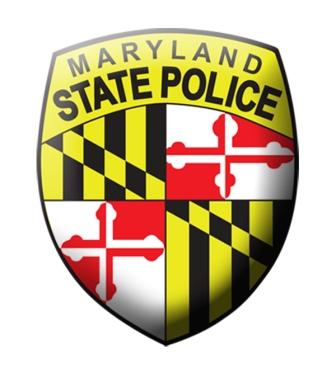Colonial Maryland
Under English common law, every person had an active responsibility for keeping the peace. This was a vital principle in colonial Maryland, a fledgling society with no police or peace officers. The responsibility included crime prevention through vigilance and the apprehension of suspected lawbreakers by groups of persons raising the "hue and cry" or the more official "posse comitatus." Persons whose previous behavior indicated that they were at risk of breaking the peace could be taken before a local court or magistrate and bound over to keep the peace, thereby, in theory, preventing crime. Adapted from the British legal system were the positions of sheriff and constable, officers of the county court who also enforced the law. Sheriffs and constables had no jurisdiction outside their own county. As population increased, county and municipal police departments were created to meet local needs.
Baltimore City Police Force
The first State agency to exercise police powers was the Baltimore City Police Force. Established in 1867 under a Board of Police Commissioners, the Force was elected by the General Assembly (Chapter 367, Acts of 1867). Baltimore had been developing a police force since the formation in 1784 of a night watch "very necessary to prevent fires, burglaries, and other outrages and disorders" (Chapter 69, Acts of 1784). Its police force, from 1867, was governed by a State board although jurisdiction was limited to the City. From 1900 to 1920, the Board of Police Commissioners was appointed by the Governor. After 1920, a single Police Commissioner of Baltimore City was chosen and also served on the Governor's Advisory Council. The Baltimore City Police Department remained under State governance until 1978, when the Mayor began to appoint the Police Commissioner, subject to confirmation by the City Council (Chapter 920, Acts of 1976).
State Detective Force
In 1909, the Board of Police Commissioners of Baltimore City urged the creation of a State detective force since the Governor, the Fire Marshal, and State's Attorneys in the counties frequently sought help from Baltimore City's expert investigators. The first tentative step towards a statewide police force, however, was taken in 1914 as a corps of motorcycle officers under the Commissioner of Motor Vehicles began to enforce motor vehicle laws throughout Maryland (Chapter 564, Acts of 1914).
State Police Force
When a crime wave struck Maryland after World War I, the need for statewide enforcement of criminal law became critical. The Governor, the Police Commissioner of Baltimore City, and the Commissioner of Motor Vehicles came up with a plan for a State Police Force under the Commissioner of Motor Vehicles. Former servicemen were recruited and the first training camp was conducted early in 1921. By 1922, the force of motorcycle deputies had statewide jurisdiction over criminal cases through deputization by the county sheriffs. The force was supported by a plainclothes investigative department and was known as the State Police Force.
Maryland State Police
In 1935, the Maryland State Police was established as a separate unit of State government (Chapter 303, Acts of 1935). The new agency was funded out of revenues from the Department of Commissioner of Motor Vehicles. It was granted additional statewide police powers to enforce fish, oyster, game and other conservation laws and maintain a training school. The Maryland State Police were made part of the Department of Public Safety and Correctional Services in 1970.
Maryland Department of State Police
In 1994, the Department of Maryland State Police was formed as a principal executive department (Chapter 165, Acts of 1994). It was renamed the Department of State Police in 1995 (Chapter 3, Acts of 1995).
The Department of State Police enforces State motor vehicle and criminal laws and safeguards the lives and safety of all persons within the State. The Department protects property and assists all persons to secure the equal protection of law. The Department also preserves the public peace; detects and prevents crime; and enforces the laws and ordinances of the State and its local subdivisions. It apprehends and arrests criminals and lawbreakers, and preserves order in public places. In addition, the Department maintains the safe, orderly flow of traffic on public streets and highways and cooperates with and assists other law enforcement agencies.
The Department of State Police has statewide jurisdiction except in incorporated municipalities. Within municipalities the Department may exercise jurisdiction under certain conditions, as regulated by statute (Code 1957, Art. 88B, secs. 3, 4, 20, and 23). The Department also enforces the laws relating to controlled dangerous substances (narcotics) throughout the State with no jurisdictional limitations (Code 1957, Art. 27, sec. 298(g)).
State Fire Marshal
The State Fire Marshal and the State Fire Prevention Commission were transferred in 1997 from the Department of Public Safety and Correctional Services to the Department of State Police (Chapter 352, Acts of 1997). The office of State Fire Marshal was first created in 1894 to investigate suspicious fires throughout the State and prosecute guilty parties (Chapter 248, Acts of 1894). The office was funded by insurance revenues, and insurance companies were required to report all claims for fire losses to the Fire Marshal. The mere existence of the office was thought to deter arson. By 1915, the Fire Marshal was investigating annually over one thousand fires statewide and inspecting fire exits and escapes in public buildings. In 1916, the position of State Fire Marshal was abolished and its powers and duties transferred to the State Insurance Commissioner who was authorized to appoint an additional deputy to handle fire duties (Chapter 521, Acts of 1916). In 1964, the office of State Fire Marshal was recreated, along with the State Fire Prevention Commission, a new State Fire Prevention Code, and revision of laws pertaining to fires and investigations, fireworks, and explosives (Chapter 46, Acts of 1964).
